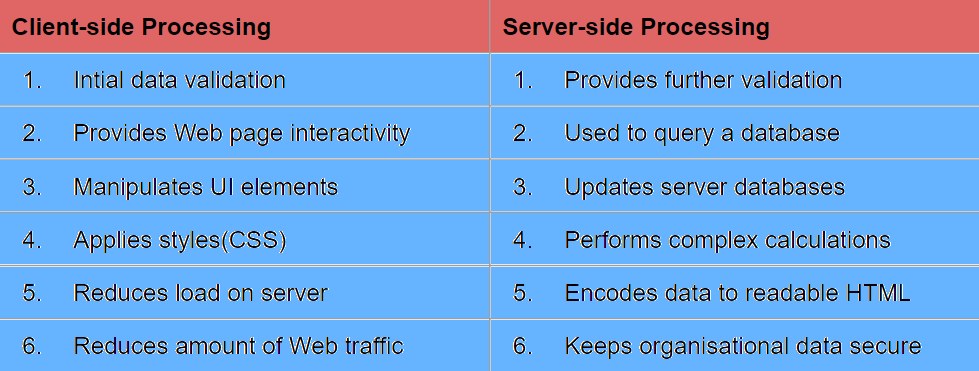Client server and peer to peer
Web Technology
HTML
Form
Search engines
Client server and peer to peer
Client server networking
A client server is when several computers known as clients are connected to one powerful server. Each client is able to store files on its local computer but is also able to store files on a the central server while gaining accsees to the files as well. Most commonly a large organistaion would usaully have serval servers that all carry out different tasks. This can help with relieving stress of one serve having to do all of the work.

Typical roles for a server
File Server: holds/manages data for all clients
Print Server: manages print requests
Web Server: manages requests to access the Web
Mail Server: manages the e-mail system
Database Server: manages database applications
Advantages
Better security, all files stored centrally and access rights managed by server.
Backups done centrally, no need for individual users to backup their data. If data is lost, recovery procedures will enable it to be restored.
Data/resources can be shared.
Disadvantages
Expensive to install and manage.
Professional staff needed to maintain serves and run the network.
Peer-to-peer networking
A peer-to-peer network does not require a central server to be involved. The way that computers shares files in this network is by each individual compuer is connected to each other to allow file sharing to be possible in this type of network. Peer-to-peer networks are used by companies that provide some sort of video service. This is how torrent websites work by sharing files in this manor.
In small Local Area Networks (LAN) a peer-to-peer network would be a good choice because :
They are cheap to set up
Allows computers to share resources such as a printer or a router
It isn't difficult to maintain
Advantages
If there is a large video that needs to be stored, severak computers can help by sharing small parts of that video. This can releive the load of storing a large video on only one computer
Disadvantages
A problem can start to occur when lots of people want to download the same file at the same time
Processing Data
Why use server-side processing
Server-side processing often processes very large volumes of data and can process the information much faster than a client machine.
In order for most server-side processes to function a specific language would be used such as SQL or PHP.
Why use client side processing
A client machine may have some sort of special software in order for it to process information.
Also by using client side processing you will be reducing the load on the server's processor as well as improving the security as
it can prevent from unnecessary data transfers from taking place, which may hold inofmration that can expose personal infiormation.
Comparison

Thin-clients vs Thick-clients
The thickness of a client computer refers to the level of processing and storage that it does compared with the server. The more processing and storage that a server does, the thinner the client becomes. If all the processing and storage is done by the server, then all that is needed for the client is a very basic machine with very little processor power and no storage, this is often known as a dumb terminal.
PHP server
